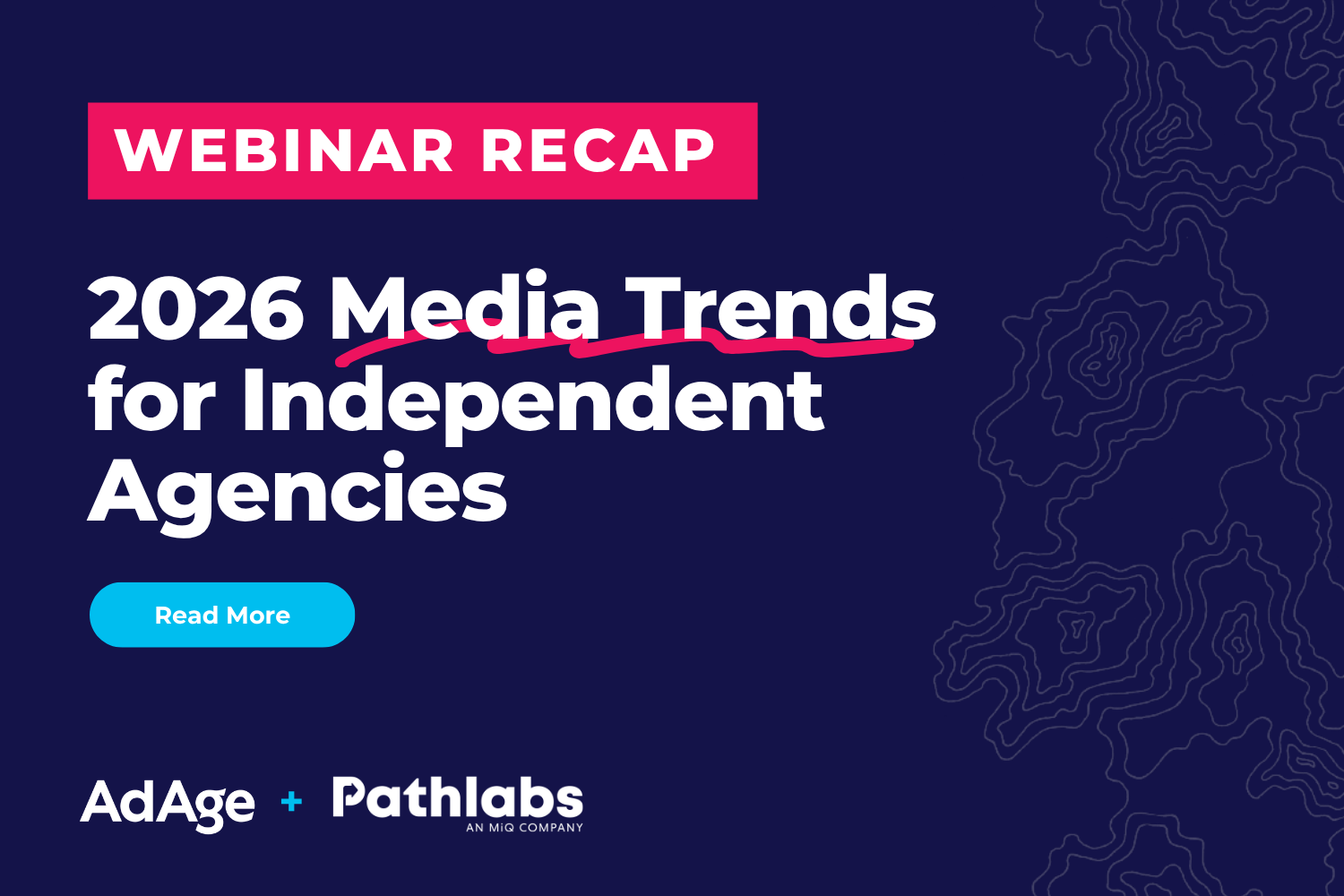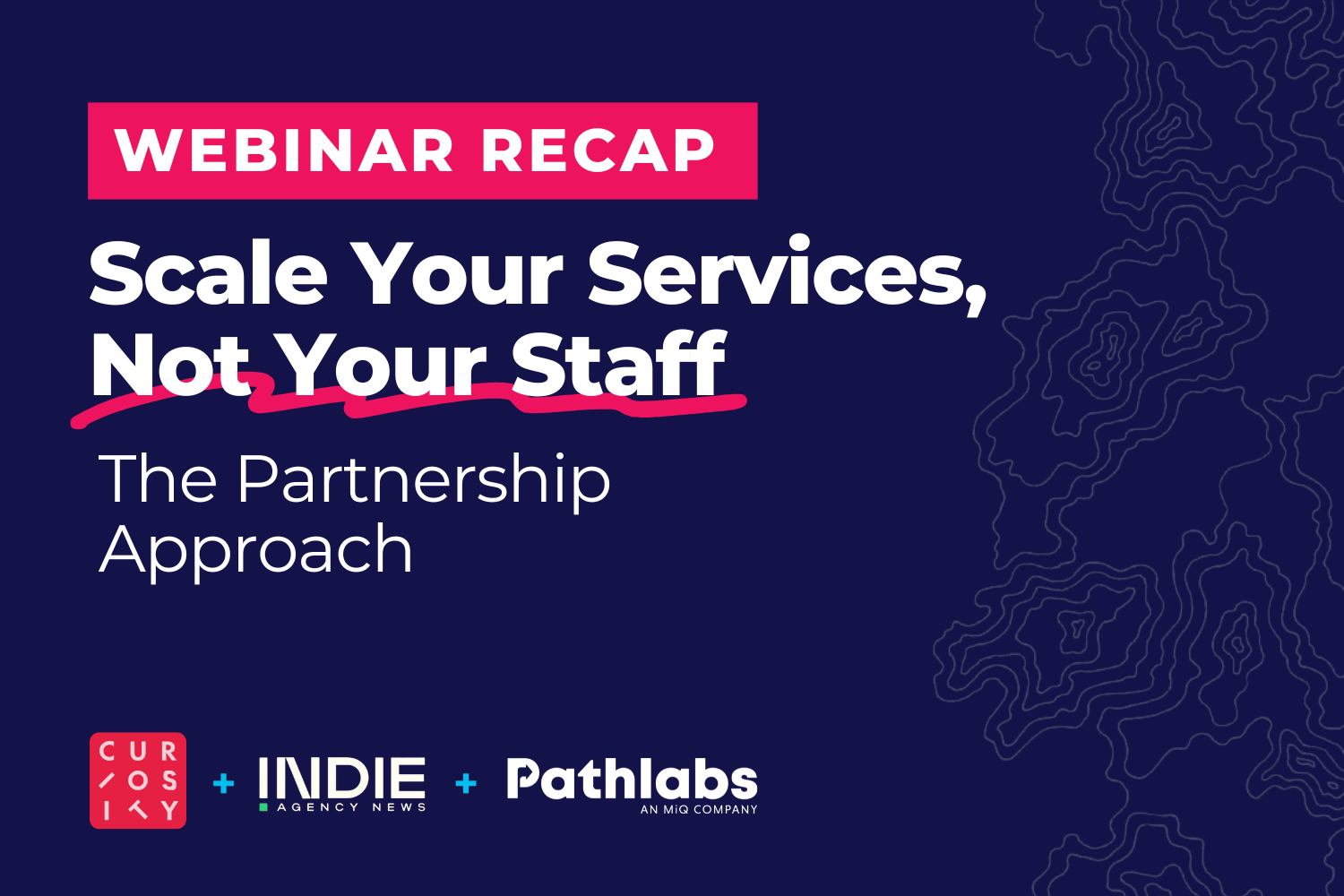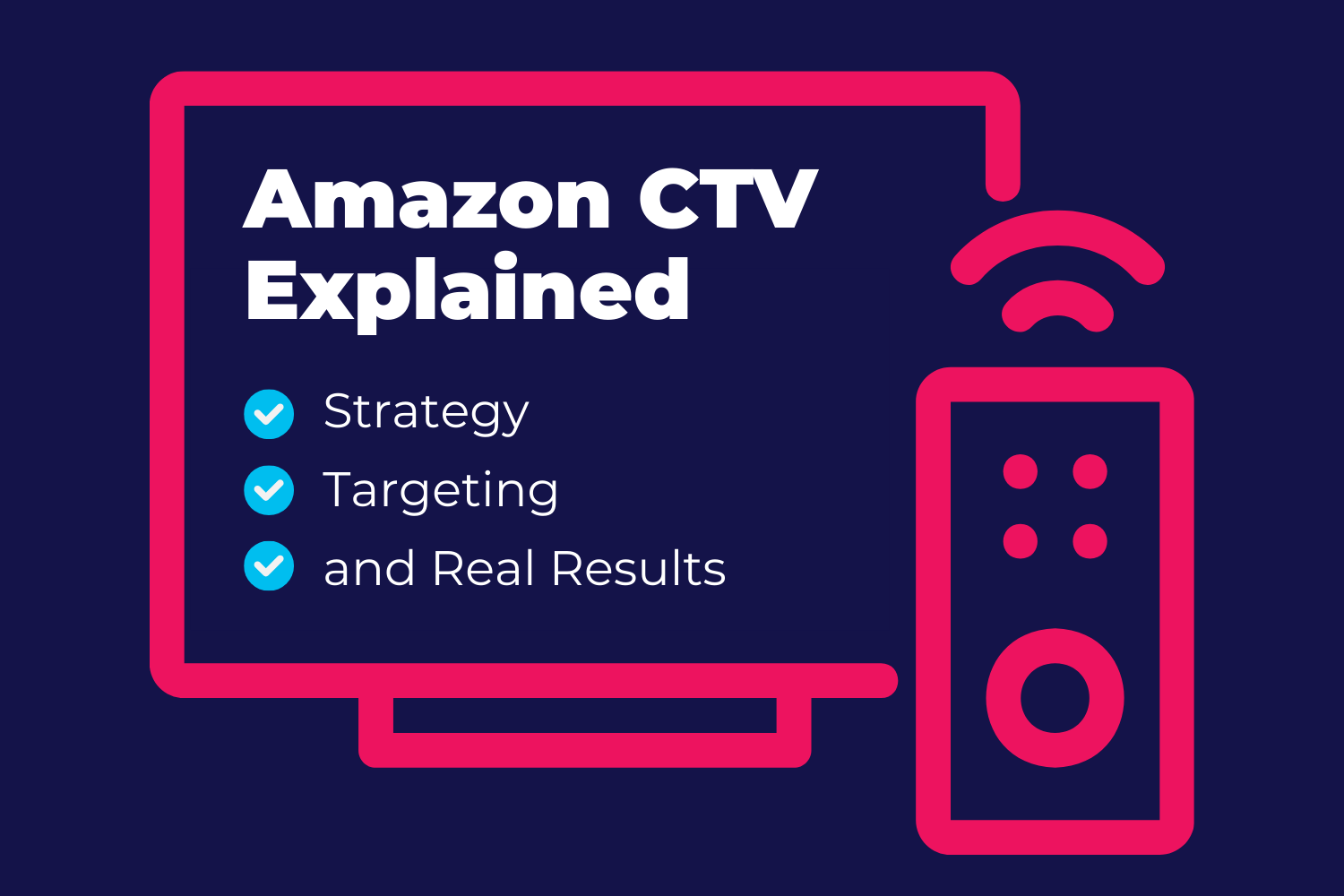What Is Walled Garden Advertising?
| Pathlabs Marketing |
| April 10, 2024 |
“Walled Garden” is a term we use excessively within the media industry. But honestly, can you easily put into words what the walled gardens are? More importantly, do you understand the nuances of executing digital media campaigns within these spaces?
We have got you covered. Let’s paint a picture of the walled gardens, how teams advertise on them, their advantages and disadvantages, and some strategies to keep in mind.
What Is a Walled Garden in Advertising?
A walled garden refers to a platform or ecosystem run by a large entity that has high levels of containment and control over the content, functions, data, and overall operations within.
A distinguishing factor of walled gardens is their access to first-party data.
Walled gardens, such as Google, Amazon, Meta, and Apple, have massive user adoption across their multiple platforms, applications, and other services. As users engage, consume content, and even make purchases in these spaces, they generate exponential amounts of data. More importantly, these users must opt-in by creating accounts via an email or other identifier and logging in for every session across devices.
These walled gardens collect all this first-party data and compile it for further insights. This puts them in a position with untapped access to user attention, prime advertising real estate, and first-party data—a dream for advertisers.
In effect, walled gardens allow advertisers to pay to execute campaigns within their platforms and ecosystems. This enables the advertiser to leverage the first-party data the walled garden collects—to an extent—when serving ads, ensuring they appear in front of more relevant audiences.
That is walled garden advertising. Under this model, the data and attention—contributed by users—become the product being sold to advertisers by the walled garden in the form of placing targeted ads in front of these users.
Examples of Walled Garden Platforms
When discussing walled gardens, the names Google, Amazon, Meta, and Apple often dominate the conversation. However, this category has expanded in recent years to include entities like LinkedIn, TikTok, Snapchat, Netflix, Peacock, and Spotify.
To clarify, walled gardens can be individual platforms, such as LinkedIn and Netflix, or they can refer to broader ecosystems like Google, which encompasses Chrome, Google Search, Google Maps, YouTube, etc.
Apple as a walled garden is a unique case. It doesn’t offer many advertising opportunities besides Apple Search Ads on its app store. However, it has mass user adoption and first-party data in the form of users utilizing Apple devices – devices that download and constantly communicate with almost all the other listed walled gardens. This alone firmly places Apple within the walled garden discussion.
Key Components of Walled Garden Advertising
Advertising on walled garden platforms and ecosystems has some caveats and particular rules to play by.
Platform Technology and Add-ons
First, walled gardens mandate the technology media teams can use to execute campaigns and advertise within their platforms or ecosystems.
For instance, if somebody wants to advertise on Meta, Google, or Amazon, they almost always have to use the corresponding ad management platforms like Meta Ad Manager, Google Ads Manager, DV360, Amazon DSP, and so on.
This requirement extends to other pieces of the tech stack necessary for executing successful media campaigns, encompassing DMPs and other essential tracking, reporting, and analysis tools. Most walled gardens build these features into their ad managers or have additional tools the advertiser can use, owned or connected to the proprietary walled garden, of course.
Audience Targeting Capabilities
If it isn’t clear yet, a big sell for advertising on walled garden platforms is teams get to leverage the first-party data the walled garden collects when targeting users with their ads. Depending on the walled garden being advertised on, teams normally select their audience to target when building out their campaign. They typically construct new audiences and/or select from preexisting audiences to target, built from the mass-aggregated data of the walled garden.
For instance, if a team wants to target ads to users based on certain demographics, age, gender, geo, interests, behaviors, purchase intentions, and so on, they can indicate these criteria, and then the platform will serve ads to users it knows fit the description.
However, the caveat is that you must use these audiences and data from the platform. For Google Ads, you have to use whatever targeting and data features it has; the same goes for LinkedIn, Snapchat, etc. The only workaround is activating your own first-party data, which still connects to the walled garden's data.
Data Privacy and Access Restrictions
While teams can leverage the walled garden’s first-party data for targeting and audience building, they often have restricted access to the actual granular details of this data.
An advertiser can go into the platform’s CRM or DMP and see names, emails, and even track user journeys. Instead, the team will generally select audiences to target ads to.
With ongoing privacy regulations, certain walled gardens increasingly permit users to solicit that the platform or ecosystem does not track their data. This leads to less first-party data from certain users, making ad targeting less specific.
Ad Serving and Placement
Control over ad serving, placement, and pricing firmly rests with the walled gardens, often underpinned by complex algorithms and machine learning models aimed at optimizing these processes. This approach significantly limits advertisers' visibility into and control over the exact mechanics of how and where their ads are displayed, as well as why they spent a given amount. This contrasts the transparency offered by specific platforms like Trade Desk, where advertisers have a clearer understanding of their ad bidding and placements.
Ad Formats and Creative Options
Each walled garden offers a custom set of ad formats, many of which are unique creations from the platform, such as dynamic LinkedIn ads. Many others have native qualities that simulate the regular content that appears on the walled garden platform.
Advantages of Walled Garden Advertising
Teams should consider advertising on walled gardens for two go-to reasons: large reach and first-party user data.
The walled gardens have high user adoption, with some connecting with billions of users daily. When prospecting channels to advertise on, a solid percentage of your audience will likely reside in a walled garden.
Moreover, the data from these users, captured over long periods of time, enriches campaign ad serving. Amazon alone has deep insights into its users, from retail purchases on Amazon to watching habits on Amazon Prime Video. By executing campaigns in these domains, teams get to activate this data.
Looking into the future, we can point to additional compelling reasons to consider walled garden advertising.
We are only scratching the surface with advancements in proprietary ML and AI algorithms from the walled gardens. We will likely see more that enable better campaign ad serving and optimizations.
The walled garden's share of digital ad revenue is set to continue outpacing the share of the open internet. Making adoption in this channel relevant.
There is a proliferation of devices per user, with the average US consumer having 13.4 devices at the end of 2023. This requires walled garden systems that can link users across these many devices.
Challenges and Limitations of Walled Garden Advertising
Data Limitations
The main drawback of advertising on walled gardens once again relies on the limitations in data granularity on the analysis and reporting side. The walled garden knows many of the campaign results and insights into the audiences but does not fully present them to the advertiser.
The way walled gardens calculate metrics and operate, meeting the advertiser's goal, is becoming more complex, too. Some walled gardens model conversions, while others even let the advertiser set a goal to optimize towards, and the platform will try to get as many clicks or conversions as possible. In this case, it just gets more complicated for the advertiser to discern performance based on how much they paid.
Disparities of the Walled Gardens
Walled gardens have essentially fragmented into their own domains and realms. Deciding which walled garden to invest in is inherently tricky. It becomes even more challenging to figure out how to build and execute a campaign for the corresponding walled garden platform. You must customize each campaign and its creative to the platform while understanding each platform's jargon and campaign hierarchy.
High Demand and Competition
Since walled gardens are in high demand on both the user and advertiser sides, they tend to charge higher advertising costs, especially for walled gardens operating in the CTV/OTT space. You also have to compete with more advertisers, trying to get user attention.
Ad Creative Review Processes
Walled Gardens implement strict ad creative review processes. This is great for users, as they only view ads with solid quality. It becomes more demanding for the advertisers having to know the rules and how to get their ads submitted and approved for placement in time for campaign flight launch.
Strategies for Success in Walled Garden Advertising
Understand The Extent Of Your Control in the Walled Gardens
Walled garden platforms utilize sophisticated algorithms and artificial intelligence to manage ad delivery and targeting, often with little transparency. Adjustments you make to campaigns can have unpredictable results due to these underlying mechanics.
It’s essential to approach these platforms with a mindset that specific outcomes may be beyond your direct influence despite your best efforts and strategies. The goal is to work within these constraints to optimize your campaigns as much as possible, accepting that perfection and complete replicability may be unattainable.
Explore the Different Data-Targeting Options Offered by Walled Gardens
Walled gardens offer multiple ways to target users by leveraging the platform's first-party data. You can even activate your own first-party data, matching it to users in the walled garden platform. You might also explore lookalike audience capabilities and pixels. While doing so, remember to monitor the quality of traffic and user engagement along with your other metrics like ROAS. Walled gardens may drive high amounts of traffic, but the key is to ensure it is the right traffic.
Don't Feel Like You Have to Advertise on Walled Gardens
Walled gardens have a powerful dominance in the digital media landscape, but they aren’t the only players offering advertising capabilities. Teams can successfully execute many display, native, DOOH, audio, and even CTV campaigns without directly interacting with walled gardens.
How Can a Media Execution Partner Transform Walled Garden Media Execution?
Independent agencies performing media execution tasks for clients need to have a solid understanding of walled gardens today and into the future, especially when they need to make a case for whether a client should or shouldn’t invest in advertising on these channels.
The agency’s team also has to stay up to date with changes in regulations, privacy policies, and algorithms within the walled gardens while ensuring campaign success and profitability. This becomes a full-time job.
To alleviate this burden, agencies can collaborate with a Media Execution Partner (MEP). MEPs offer specialized workflows, technology access, and, most notably, a team of trained professionals dedicated to assisting agencies with their media execution.
This enables the agency’s teams to free up time and focus on high-level planning and scaling the business while the MEP handles the minutia of media execution.
Additionally, the MEP provides tips and tricks that level up the agency’s internal team, helping them provide service and answer their agency clients' questions about walled gardens the right way.
Contact Pathlabs below to learn more about the walled gardens and how an MEP can help your agency navigate them.










